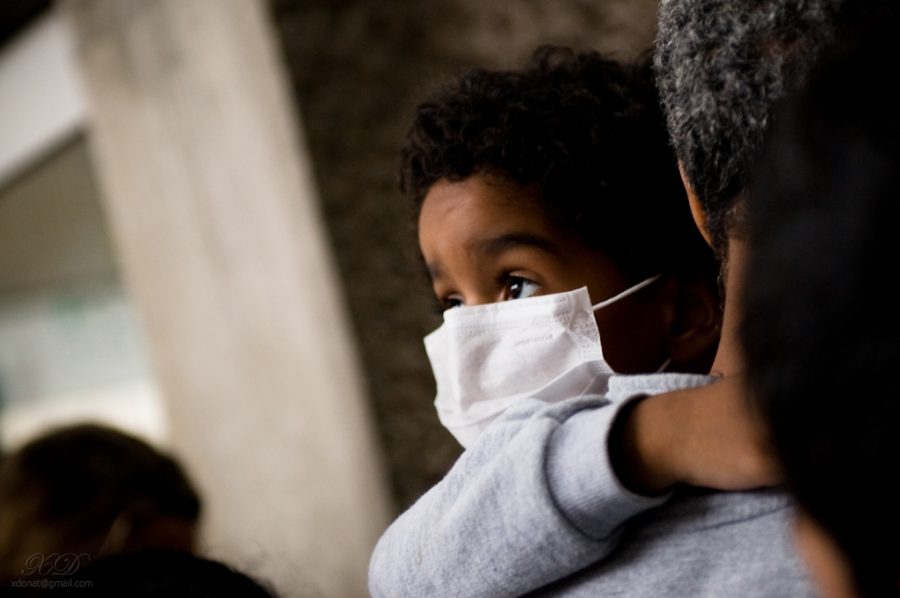Baruch needs to step up against monkeypox
Xavier Donat (xdonat@gmail.com)
Taylor Donat | Google
September 3, 2022
Baruch College and the City University of New York should do more than the Centers for Disease Control and Prevention’s recommendations to prevent the monkeypox outbreak..
New Yorkers and CUNY students cannot afford to relive the long quarantine period which followed the COVID-19 outbreak.
If monkeypox is not contained, drastic measures, such as a wide-scale quarantine, seem imminent. The spread of the virus must therefore be halted before it becomes unmanageable.
The symptoms of monkeypox include fever, swollen lymph nodes, muscle aches, respiratory problems and rashes.
Some individuals reported experiencing flu-like symptoms, according to a CDC report. The symptoms usually start three weeks after exposure and the illness can last from two to four weeks.
The CDC reported 17,432 cases of monkeypox as of Aug. 26. The illness has already reached every state.
California and New York have reported the highest numbers, with 3,291 and 3,124 cases, respectively.
Florida, Georgia and Texas are not far behind, with 1,870, 1,397 and 1,642 cases, respectively.
Many are electing to receive the monkeypox vaccine in response to the rising numbers. 207,728 doses have been administered as of Aug. 23, as reported by the CDC.
The CDC published prevention guidelines which recommends washing hands often, and avoiding skin to skin contact with an individual who is exhibiting a rash or other monkeypox symptoms.
However, the CDC’s guidelines are nowhere near as stringent as they should be to effectively halt the rapidly increasing case count.
This is likely because monkeypox tends to be considered less severe than COVID-19, causing many to dismiss the importance of taking precautionary measures against the disease.
America’s lack of preparation for an event such as the coronavirus pandemic demonstrated how dangerous this sort of attitude could be.
This time around, handwashing and avoiding skin to skin contact are not enough to prevent another pandemic.
The only thing the CDC is currently ready to provide is vaccinations. Unlike the COVID-19 pandemic, a vaccine was readily available at the onset of the monkeypox spread.
MVA, initially developed by Bavarian Nordic as a smallpox vaccine, was already approved to be used against monkeypox in the United States.
However, a recent study showed that the vaccine is only 86% effective at preventing monkeypox, meaning that it is necessary to take additional precautions.
Similarly, not everyone is getting vaccinated, since the illness is not yet as mainstream as COVID-19.
Currently, healthcare workers and laboratory workers are at particularly high risk of getting infected.
The risk of infection for children and adolescents, in contrast, is low, according to a CDC report.
However, the risk is certainly still there. The CDC has not recommended nearly enough safety procedures to be enacted in classrooms, therefore jeopardizing the safety of school-age children.
As of now, a student who was exposed to a parent or a caregiver with the monkeypox infection can immediately rejoin the classroom.
Instead, the CDC must execute a plan of prevention to stop the viral infection from spreading further, regardless of the low-risk in children and adolescents.
One specific course of action the CDC could take is to disseminate more information regarding monkeypox.
Moreover, a stigma has developed that associates those with monkeypox as also being a part of the LGBTQ+ community because the virus has been seen to spread through sexual contact among men who have intercourse with men.
However, on top of educating the public on the importance of hand washing and avoiding skin to skin contact, it is crucial to destigmatize the sexual aspect of the virus’ spread and care any community that is exposed to it.
CUNY Chancellor Félix V. Matos Rodriguez announced in a public email to all CUNY students that CUNY Campus Health Services are offering services to assess the monkeypox symptoms for students and provide resources for information and education on prevention across all CUNY campuses.
Although this is certainly a step in the right direction, Baruch should do better in preparing a plan of action for the outbreak instead of just following the CDC’s lacking guidelines.
All CUNY campuses should be making an effort to educate students about the virus and the nature of its spread.
So far, CUNY has provided guidelines and resources regarding the monkeypox virus.
Baruch College Health Services advises students for isolation if one is exposed to the virus. There is information on symptoms, transmission, treatment and vaccinations.
However, there isn’t a specific course of action if an outbreak occurs.
“In order to prevent the spread of infection, people should avoid contact with anyone with known or suspected monkeypox. Individuals who may have symptoms of monkeypox should isolate and contact their healthcare provider immediately,” Baruch College Health Services stated in a public announcement.
There isn’t any specific information on what to do, aside from seeing a physician and isolating oneself.
This is similar to the guidelines which initially surrounded COVID-19 and ultimately proved ineffective at preventing such an outbreak on campuses.
Safer sex and social gatherings are highly recommended at a time like this, as well as providing sex education to young adults from educational institutions and parents or caregivers.
The pre-existing measures are not sufficient. If the COVID-19 pandemic has taught us anything, it is that inaction at the onset of a pandemic forecasts a gloomy future for America.







